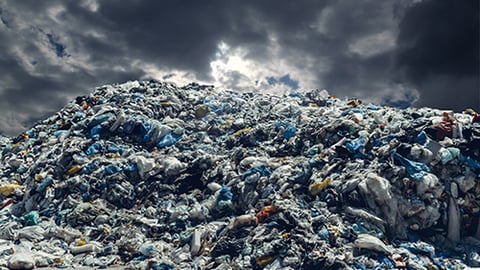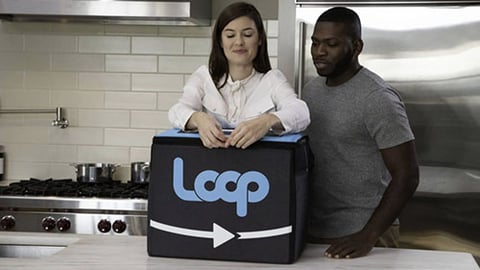7 Best Practices for Eco-Friendly Packaging
In the past, sustainable packaging simply meant that it was recyclable. And while the 3Rs —Recycle, Reduce, Reuse — are the gold standard when it comes to eco-friendly practices, recycling has always reigned supreme.
Today, sustainability must transcend the traditional norms, focusing on broader methodology that can provide concrete solutions to our world’s environmental crises. According to the Frontier Group, “about 30 percent of all U.S. garbage is packaging, which is of little use to consumers and is typically thrown out after a product is purchased.” That’s why it’s imperative for businesses and manufacturers in the packaging industry to take accountability and implement environmentally conscious designs — especially since modern consumers demand transparency and social responsibility from the brands they purchase. Businesses that make the commitment to satisfy this growing need will help strengthen their customer relations and solidify loyalty.
To achieve eco-friendly packaging, manufacturers must look beyond recycling, and instead research and implement innovative and creative methods that can make a difference in the long run. This can be accomplished by adopting the practices of a circular economy and integrating processes that address waste prevention. Packaging that is minimal in size, reusable, devoid of plastic and developed with responsibly sourced materials will drastically lower the carbon footprint and prevent spoilage.
ALTERNATIVE MATERIALS
Plastics, which are created from fossil fuels, are not fully biodegradable, so eco-friendly packaging must include alternative materials that are responsibly sourced, easily biodegradable, and provide an effective barrier against issues that can impact health and safety. A variety of materials, such as mycelium, which is made from mushroom roots, and bioplastics, which are made from corn or various other plants, have shown their effectiveness in packaging. As for temperature control, manufacturers are moving away from traditional polystyrene insulation and replacing it with compostable jute or burlap.
EDIBLE PACKAGING
Edible food packaging doesn’t necessarily mean that consumers have to eat their plates and cups when they’re finished eating. Although cornstarch spoons and bran plates are a reality, edible packaging can encompass a lot more.
Products such as edible, biodegradable films are making their way into the market. For instance, plastic coatings that protect meat and cheeses are now being manufactured from casein, a milk-based protein. Electrostatic gels can also be used to coat soft fruits. The potential for edible packaging is limitless. Developers are aiming to provide more solutions as they aim to resolve food safety issues, prevent waste and create options that can withstand the rigorous distribution channels.
SPOILAGE PREVENTION
Food waste is a massive, global issue. It is estimated that 40 percent of food is spoiled and wasted during its transit. Since the production of food requires 10 times more resources than the creation of packaging, it’s essential that businesses tackle this matter head-on. But with consumers seeking packaging that looks and feels natural, it can be a challenge for manufacturers to achieve the right balance. Packaging that meets consumer requirements may not be a viable option to prevent food waste. That’s why it’s important for businesses to communicate with their customers and outline the reasons behind their strategies.
FLEXIBLE PACKAGING
Flexible packaging is the fastest-growing trend in the industry. Convenience, affordability, functionality and sustainability are what make it so popular. Its ability to extend the shelf life of many products also plays a pivotal role in helping reduce food spoilage. The durability and lightweight features of flexible stand-up pouches make them easier and cheaper to ship, and help reduce the carbon footprint that results from the shipping process. Flexible packaging also boasts minimal raw materials, making it a top contender in the hunt for options that can replace its rigid counterparts.
CORRUGATED
Corrugated packaging is the material of choice when it comes to sustainable options. Lightweight and easily recyclable, corrugated fiberboards are also reusable and manufactured from 70 percent to 100 percent renewable resources. The uses of corrugated packaging are many. They can be employed in interior or exterior packaging to offer superior protection, and come in variable flute profiles that cushion products and prevent compression. For these reasons, corrugated materials are a popular favorite among consumers.
UPCYCLING
Packaging that can be converted into second-life products offers consumers greater value, which is why an increasing number of brands are implementing this strategy. Whether it’s an attractive box that can be reused for storage, or a zip pouch that can turn into a toiletry bag, upcycling is a method that leverages consumers’ thriftiness and desire to reuse. From packaging that converts into plant pots, lanterns, ice buckets, pet houses and more, the ideas are inexhaustible, and when manufacturers work to design fun and innovative concepts, consumers take notice.
DIGITAL PRINTING
Using a digital printing process for product packaging is far more sustainable than offset printing since it uses much less ink and doesn’t require the use of plates. This allows for short-run and customized printing that eliminates waste and increases efficiency.







